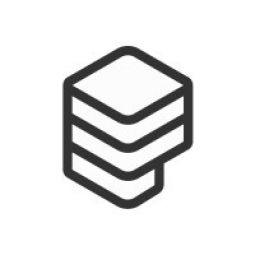Technology Category
- Application Infrastructure & Middleware - Data Exchange & Integration
- Application Infrastructure & Middleware - Middleware, SDKs & Libraries
Applicable Industries
- Cement
- National Security & Defense
Applicable Functions
- Maintenance
- Sales & Marketing
Use Cases
- Building Automation & Control
- Tamper Detection
Services
- System Integration
About The Customer
Trustpage is a Michigan-based company that operates in the Trust & Security industry. They provide B2B SaaS companies with a dynamic Trust Center that covers every stage of the software lifecycle, from product discovery and sales through to security reviews. This includes enabling their customers' sales teams to securely request and share documents, all within their CRMs. Trustpage aims to turn security into a competitive advantage for their clients. They are committed to expanding their integration roadmap past CRMs and messaging apps and into other verticals, and to continue improving their AI-assisted security reviews.
The Challenge
Trustpage, a company that provides B2B SaaS companies with a dynamic Trust Center, faced a significant challenge in their integration strategy. They needed to ensure that their customers' sales teams could securely request and share documents within their CRMs. Additionally, they had to ensure that all teams of their prospects could effectively leverage Trustpage with the tools they were already using. This created an urgency to turn around these integrations quickly. The team began searching for solutions to offload the engineering work for their integration strategy. They needed a solution that met their security requirements, saved substantial engineering resources on each integration, was feasible for their integration use cases, and provided reliable technical and account support.
The Solution
After a proof of concept (POC) with Paragon and a competitor, Trustpage chose Paragon as their solution. Paragon's account and technical support gave Trustpage the confidence they needed in a reliable partner. Paragon's built-in actions made it easier to build the integration, translating workflow endpoints into common language and an intuitive interface. Paragon's out-of-the-box UI (Connect Portal) for enabling integrations made it easy to ship quickly with a seamless user experience. Trustpage was able to release future integrations rapidly and make updates and improvements to their users' integration experience easily and quickly. The CRM/Slack integrations enabled Trustpage's customers' commercial teams to get notifications for private document requests from right within Salesforce/HubSpot/Slack with a direct link to their Trust Center.
Operational Impact
Quantitative Benefit

Case Study missing?
Start adding your own!
Register with your work email and create a new case study profile for your business.
Related Case Studies.

Case Study
System 800xA at Indian Cement Plants
Chettinad Cement recognized that further efficiencies could be achieved in its cement manufacturing process. It looked to investing in comprehensive operational and control technologies to manage and derive productivity and energy efficiency gains from the assets on Line 2, their second plant in India.

Case Study
Data Capture for Afghanistan Forces
Electronic equipments on the field of Afghanistan provided information on the status of the vehicle and to identify potential threats surrounding it to the British Force. The monitoring and interpretation of this data requires robust and sophisticated digitization for data capture and communication.

Case Study
Digital Transformation of Atlanta Grout & Tile: An IoT Case Study
Atlanta Grout & Tile, a Tile, Stone & Grout restoration company based in Woodstock, Georgia, was facing challenges with its traditional business model. Despite steady growth over the years, the company was falling behind the web revolution and missing out on the opportunity to tap into a new consumer base. They were using independent software from different vendors for each of their department information and workforce management. This resulted in a lot of manual work on excel and the need to export/import data between different systems. This not only increased overhead costs but also slowed down their response to clients. The company also had to prepare numerous reports manually and lacked access to customer trends for effective business decision-making.
Case Study
Enhancing Security and Compliance in Remitly's Global Money Transfer Service with Fastly
Remitly, an online remittance service, was faced with the challenge of securing its proprietary global transfer network. The company needed a security solution that could meet PCI requirements and protect customers' sensitive transactions through its mobile application. The solution had to be capable of defending against new and emerging attack types without impacting performance. Remitly also had to deal with irregular traffic patterns, such as a sudden spike in account transfers from a small network segment on the Pacific coastline of South America. The company needed to determine in real time whether such traffic indicated an attack or valid requests. A traditional web application firewall (WAF) would not be able to distinguish this traffic, potentially leading to customer frustration if the IP was blacklisted.

Case Study
Major Aerospace Company Automates Asset Management
The O&M division of an aerospace and global security company was using spreadsheets to manually track more than 3,000 assets assigned to students and staff. Maintaining audit trails for this high volume of equipment became increasingly time-consuming and challenging. The chore involved knowing precisely what equipment was on hand, what had been issued, its location and the name of the custodial owner of each item. Every aspect of this task was carried owner of each item. Every aspect of this task was carried out by individuals with spreadsheets. Manually documenting the full lifecycle of each asset added to the burden. This included tracking maintenance requirements and records, incidents and damages, repairs, calibrations, depreciation, and end-of-life data.








